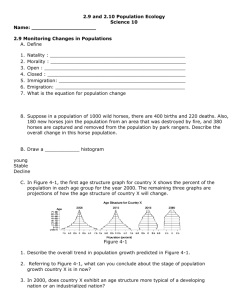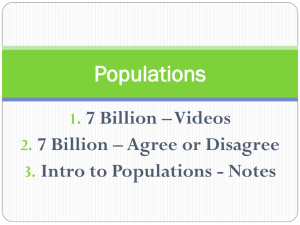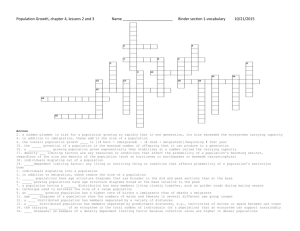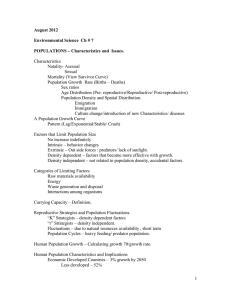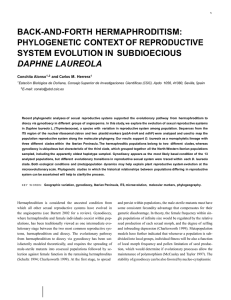Notes: Population Ecology
advertisement
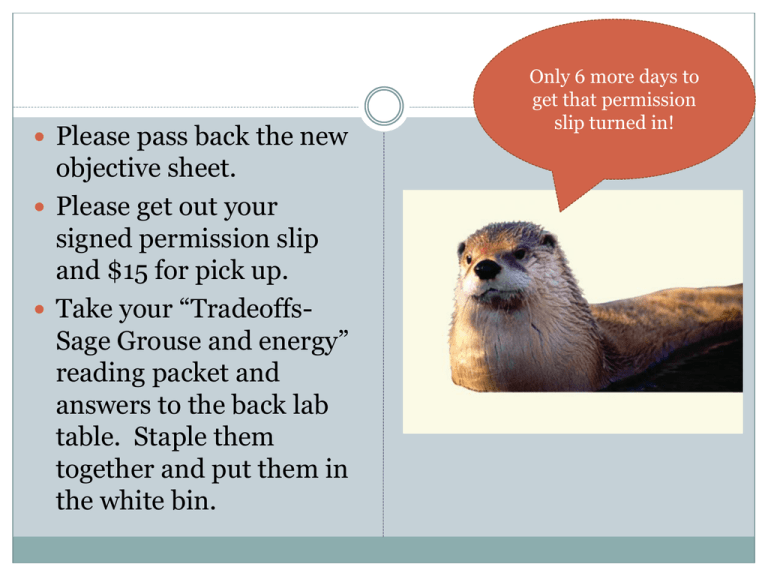
Please pass back the new objective sheet. Please get out your signed permission slip and $15 for pick up. Take your “TradeoffsSage Grouse and energy” reading packet and answers to the back lab table. Staple them together and put them in the white bin. Only 6 more days to get that permission slip turned in! What do you think of this? Population Ecology WHAT ARE THE RULES? THEY DON’T APPLY TO US, DO THEY? Rule #1: Populations will grow exponentially according to their biotic potential Linear growth vs. exponential growth Biotic potential – capacity for growth Age at reproductive maturity Generation time Time between reproductive events Offspring per reproductive event Rule #2: Populations cannot increase indefinitely Sigmoidal growth – the S curve Carrying capacity The number of individuals of each species that can survive in an area indefinitely. Subtle details! At carrying capacity (K), individuals are still dying and being born. The total population size is constant. Populations do not know when they’ve reached K Populations cycle above and below K several times before leveling out. Limiting factors set the carrying capacity Two categories of limiting factors 1. density-independent limiting factors Natural disasters Clear cutting 2. Density-dependent limiting factors Food Mates Space Disease predators Rule#3: There is more than one strategy for getting your genes into the next generation Reproductive similarities? Reproductive similarities? Opportunists vs. Competitors Survivorship curves Rule #4: Predator and prey develop a predictable pattern. Lotka-Volterra model Soooo . . . Good thing we’re human and these rules don’t apply to us . . . Right? Or do they? What part(s) of the sigmoidal curve do you see? Name two densitydependent and two density-independent factors that apply to humans. Are we r- or Kstrategists? Defend your answer. How do humans avoid the Lotka-Volterra model?

